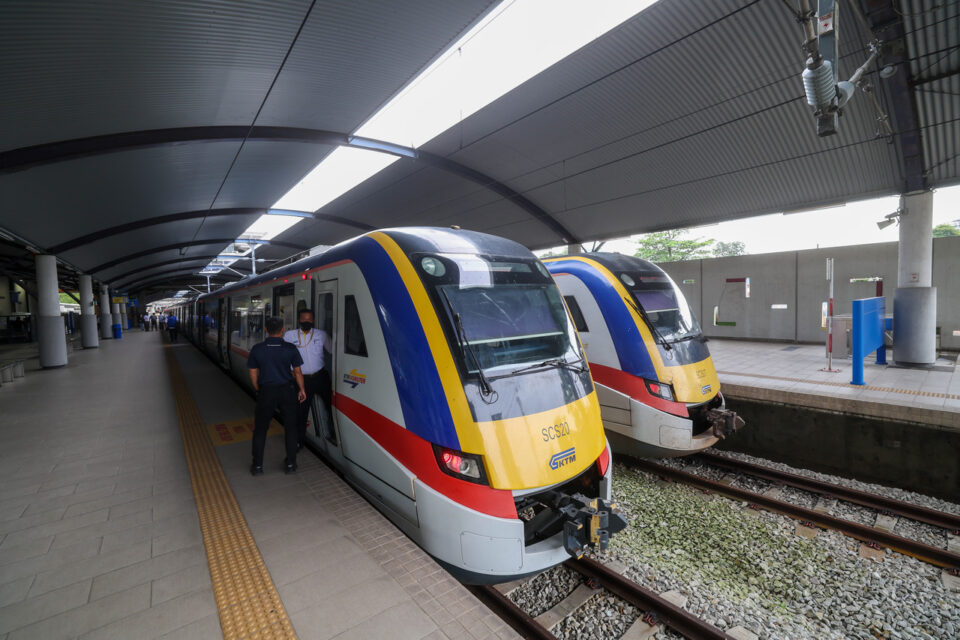KUALA LUMPUR Feb 21 — Japanese expertise in managing rail transportation and logistics will place Keretapi Tanah Melayu Bhd (KTMB) in a much stronger position to improve operational efficiency and be more competitive to meet the ever-increasing demand for the movement of cargo.
KTMB’s acting senior manager of operations control Salim Misdi said such expertise was all the more important to KTMB as freight train cargo was poised to double with the coming onstream of the new double-tracking line from Gemas to Johor Bahru (JB).
The transfer of such management and technical expertise to KTMB operations personnel was made possible through a recent programme conducted by experts from Japan Freight Railway Company (JR Freight).
With the Gemas – JB line and the existing double-tracking line to the north, the turnaround time of wagons would be much faster, leading to optimal usage of KTMB’s wagons and locomotives, hence the need for greater efficiency in handling double-tracking and taking into account future electrification.
This being the case, he said KTMB operational staff gained immensely from the programme in handling rail transport logistics efficiently and optimally from experts in freight rail transportation from JR Freight — a dominant freight train company in Japan.
The program also reflects strong Malaysia-Japan ties, with Japan being a source to improve rail infrastructure and freight logistics, whereby two years ago, JR Rail had done a similar program, assessing and upgrading KTMB’s railway system in order to increase the usage of the existing railway network in the country.
Other parties involved in the programme included the Ministry of Transport, the Railway Asset Corporation (RAC), and the Land Public Transport Agency (APAD).
Salim said KTMB should increase the number of locomotives to 25 from the below 15 currently to meet the rising demand by cargo customers, including to and from Port Klang.
Meanwhile, KTMB Cargo Services manager Yusli Ahmad said cargo volume was steadily increasing by 10 to 15 per cent each month, after the movement control order (MCO) ended, with KTMB also handling containers for cross-border movement.
“We can certainly use the technologies and systems used by JR Freight to raise KTMB’s efficiency, especially with volume expected to soar with additional wagons and tonnage after double-tracking,” he said.
Nishimura Koji, JR Freight’s senior adviser to the general manager in the overseas business department, proposed that KTMB focuses on generating more cargo from Malaysia to Thailand or China by railway transportation and not just ship cargo.
He noted that Ipoh or Nilai, being nearer to Port Klang stations, should be used as transport bases focusing on generating demand between Malaysia and Thailand, China and even Laos, as a means to increase Malaysia’s freight business.
Koji also proposed that KTMB construct domestic freight stations around the Kuala Lumpur urban area in an effort to generate domestic demand.
“Important factors in freight rail management include moving cargo from truck to rail with reduced costs, improving service quality, safety, punctuality, frequency, smooth pick-up and delivery in last mile transport and cooperation with freight forwarders,” he said.
Koji said with the Gemas – JB double tracking expected to be completed by the middle of this year, KTMB should also endeavour to offer regular freight train services to more customers from one container and not just focus on special or big customers, a move which would go a long way to increase cargo.
Customers take into account many conditions like transport time, transport cost, punctuality, frequency and freight rate.
“KTMB’s ongoing improvement to its infrastructure system has the potential to efficiently optimise its rail freight business, especially in long-distance movement. This could pave the way for Malaysia to be a regional hub for freight movement to Thailand, Laos and China.
“Moving forward, KTMB must focus on middle- or long-distance transportation (and) our market is long-distance,” he said.
— Bernama





